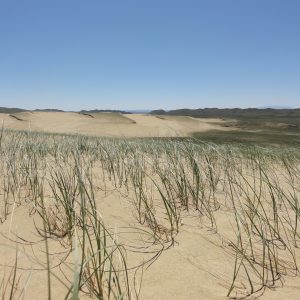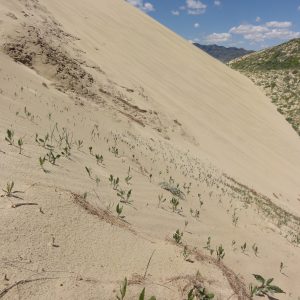As I approach the end of this internship, I thought now would be a good time to reflect on new perspectives I’ve gained working here at the Wyoming Natural Diversity Database (the Natural Heritage program for the state). Most of the field work that I’ve been doing this summer has been combing sand dunes searching for Penstemon haydenii, a threatened perennial forb, and Elymus simplex var. luxurians, an endemic grass. Both grow in sand dune habitats, but so far we have not found that their ranges overlap. Spending so much time in one specific habitat has really tuned me on to not just the plants that grow in this type of ecosystem, but also the animals that are here. My mentor and I, in an effort to help out the invertebrate biologist we work with, collected beetles that have never been documented in this part of the state. We also noticed some toads crossing the dunes the morning after a rainstorm. We took pictures and it turns out that these toads are a species of concern as well; the data we took will be valuable for herpetologists here. I have very much enjoyed working with so many knowledgeable biologists who are willing and excited to talk about their areas of expertise and lend a hand in others’ projects when they can. Sand dune environments often harbor species of concern – opening my eyes to the animal species of concern has made this an even richer experience. Although plants are still absolutely the most interesting part of the ecosystem for me, I am seeing the value in being well-rounded. There is so much land out there and so few biologists to cover it, we’ve got to help each other out.
I’ve had an excellent time in this internship and would absolutely recommend this program to anyone interested in getting into the field of botany or natural resources.








